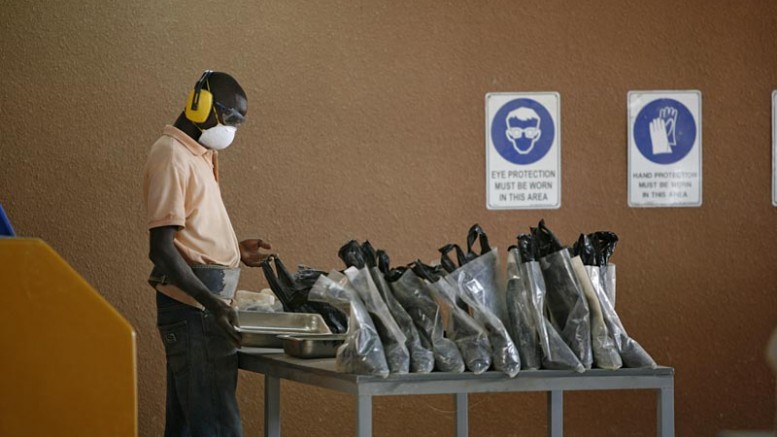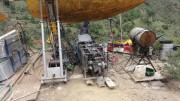A review for adequacy and quality of 34 development-stage National Instrument (NI) 43-101 studies on Sedar showed nearly half lacked engineering rigour, Tim Oliver, an environmental engineer and independent consultant, told the Prospectors & Developers Association of Canada in Toronto earlier this month.
“The conclusion was that 13 of the 34 studies flunked. They really didn’t measure up in terms of giving enough support for an investment decision,” Oliver declared at the Metro Toronto Convention Centre.
“In general, investors would benefit from more engineering rigour in these studies,” especially in key areas such as project execution planning, engineering documentation, scheduling and cost-basis discussion, or how they arrived at their capex and opex numbers.
Among Oliver’s other findings was that just 67% — or 23 of the 34 studies surveyed — passed the “qualified” part of Qualified Person (QP). “That number should be 100%,” he said. “Thirty-three percent of the QP on these studies were not qualified to do it, and that is a tragedy; there is no reason why you can’t find QPs out there.”
The survey was based on all of the preliminary economic assessments (PEAs), prefeasibility studies and feasibility studies published on Sedar between May 1 and Aug. 31, 2015. Oliver then deleted five that were “in-house jobs by big companies,” leaving 10 PEAs, five prefeasibility studies and 19 feasibility studies.
Oliver then ranked and scored the studies on a point system according to his top-10 criteria: QP conflict of interest (10 points); QP qualifications (10); commodity price deck (5); metallurgical recovery (6); signs of desperation (5); lack of engineering documentation (10); unrealistically low contingency (7); cost-basis discussion (10); missing or unrealistic project schedule (10); and new or exotic technology (5).
Only one of the studies received the full 78 points, or a perfect score, and that was the feasibility study Orezone Gold (TSX: ORE) completed on its Bomboré gold project in Burkina Faso. (“It was a terrific study, and it nailed it all around,” Oliver said, noting that he does not own any stock in the company.)
Any study scoring less than 50 points failed, while scores of between 50 and 60 fall into what he described as “that kind of ugly area — you don’t fail, but you don’t really shine, either.”
The average score for the PEAs was 49; for the prefeasibility studies, 55; and for the feasibility studies, 53.
Oliver noted that his study has limitations because it was a snapshot in time and did not evaluate resource calculations or geology. He also pointed out that he was neither a geologist nor a mining engineer.
Commenting on specific areas in the reports, he noted that seeing just one QP who is responsible for an entire study can be a red flag.
“If you look through [the report] and one person has 10 chapters that they’re responsible for, and that goes from everything from resource definition to environment and operating costs, it’s just wearing too many hats.”
He cautioned that a QP’s signature “does not guarantee reliable results … are they credible numbers? … Don’t take these things at face value, just because a QP signed off on an NI 43-101 study. You have to look deeper, or you are going to get burned.”
Another area of concern, and one of Oliver’s pet peeves, is scheduling. “First of all, if you don’t find a schedule, move on,” he warned. “If somebody tells you they’re going to build a $2-billion base metal mine in 14 months, move on. It can’t be done realistically.”
Furthermore, scheduling is not just about construction — it should be for the entire project. Only 14 of the 34 studies he examined in the survey met his standards.
Investors also need to be alert to contingencies. Oliver found that 18 of the 34 studies had unrealistically low contingencies.
He noted that studies should have engineering documentation — the nuts and bolts — while the cost-basis discussion should run to at least 18 pages, with quotes for items, such as equipment, coming from multiple vendors.
Finally, Oliver touched on cost overruns, noting that the industry seems to be plagued with them. He says the problem isn’t the actual cost overrun, but rather that the initial budget was too low in the first place.
“People squeeze the numbers down so that they get a nice shiny internal rate of return or net present value, so a board of directors will approve the project and it can go forward,” he said. “There’s a lot of pressure to … get good results.”
Investors can avoid losses if they undertake an independent engineering review of a project’s NI 43-101 study “before handing over their money,” he said. “It’s cheap insurance.”
Enforcement is also an issue, he argued.
“There is not a good enforcement mechanism right now, other than people like me looking at them and calling them out when they’re egregiously bad,” he commented.
“Instead of a race to the bottom, it should be a race to the top — we should produce studies that everyone can trust and be proud of,” he said. “If and when investors demand more rigour in these studies, owners and engineers will need to step up their game, and everyone will benefit.”





Be the first to comment on "PDAC 2016: Engineering reports fail to impress"